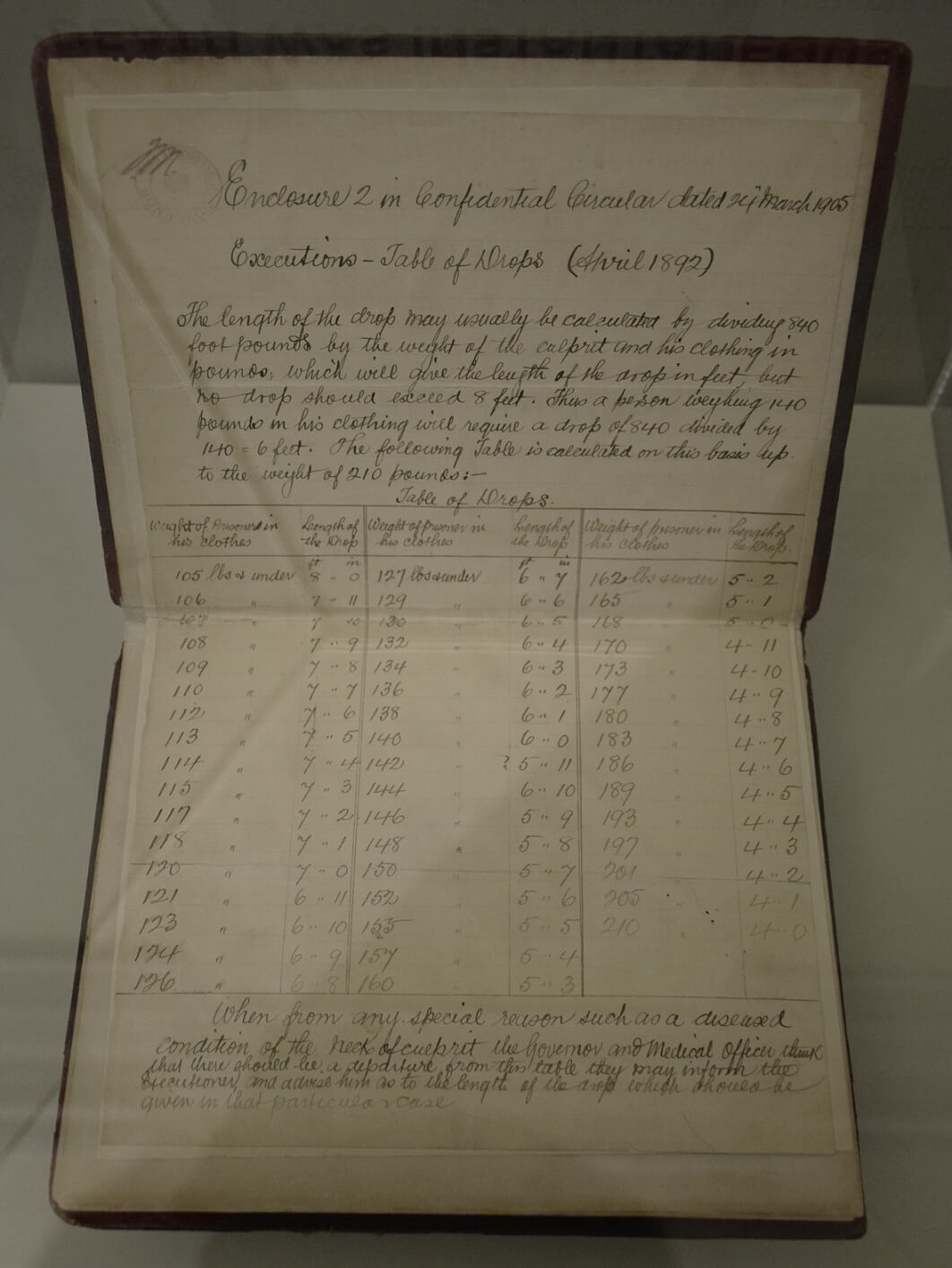Between 1842 and 1967 187 people were hanged in Victoria. Tunnerminnerwait and Maulboyheener, two Aboriginal men from Tasmania, were the first. They were convicted of killing two whalers and were executed in 1842 before a huge crowd. Prior to 1850 executions were gruesome but popular public events.
The state’s last execution took place in February 1967 when Ronald Ryan was hanged at Pentridge Gaol for the murder of prison officer George Hodson. The execution was accompanied by protest and political pressure and, seven years later, capital punishment was abolished in Victoria.
The executioners
Initially the hangman was a gaol inmate and the job attracted some unsavoury types. John Andrews (alias Michael Gately) was Victoria’s hangman from 1875 to 1879 and was particularly nasty— ‘with slouching gait and long, gorilla-like arms’. According to the Age newspaper, Gately:
… took a grim pleasure in his hideous calling. He was literally brutal. One of his favourite pastimes was to place a number of live rats in a circumscribed place, and, getting in among them, catch them in his teeth like a terrier dog and shake them to death. Afterwards he would put them on a “spit”, roast them, and eat them with every expression of relish.
Hangmen were despised and, like Andrews, most had pseudonyms or donned ‘disguises’. William Perrins, known as ‘Jones the Hangman’, had a false beard to wear at the gallows. Another, William Bamford, took the sobriquet of ‘Jack Ketch’.
By the early-twentieth century men appointed as hangmen had regular jobs outside the prison system, some with reasonably high standing in society. Their job remained secret, so that friends, associates or even their families, might not know about their shadowy, part-time employment.
‘Death was instantaneous’
In the ‘perfect’ hanging, the neck snapped and death was instantaneous. But the correct length of rope was needed. Too short a drop caused prolonged strangulation — too long, decapitation. Some hangmen took care to perfect their trade, but few were diligent. When 27-year-old Emma Williams was hanged in 1895, her neck was badly torn. For Colin Ross, executed in 1922 (and later found to be innocent), the drop did not kill. Ross was rendered unconscious, but took more than 40 minutes to die.
The 1892 Official Table of Drops
Courtesy Public Record Office Victoria, VPRS 14526/P1, unit 1
See the complete Hangman’s Journal here, reproduced courtesy Public Record Office Victoria.
On display in Lost Jobs is a copy of the 1892 Official Table of Drops, issued by the British Home Office, calculating the length of rope required according to the weight of the person. According to historian, Kevin Morgan, the table was developed ostensibly due to a ‘high incidence of bungling’. He elaborates:
In 1892, after consultation with its own officials, including hangmen, and medical officers with experience of executions, the British Home Office began developing some fundamental guidelines for how hangings should be conducted. Among the most important innovations of this period was the development of a table of drops which, although not compulsory, was recommended for use in British prisons.
The table of drops was devised according to the principle that the acceleration of a body is in proportion to the force exerted upon it, but is in inverse proportion to its mass. Put more simply, this meant: the lighter the weight of the condemned, the further they had to fall in order to reach the neck-snapping force necessary to ensure instantaneous death at the end of a rope. Conversely, the heavier the condemned, the shorter the distance they had to fall.
British ingenuity and experience had demonstrated that the force necessary for cleanly snapping the human vertebrae was, on average, 840 foot pounds. The principle translated to a table of drops calculated by dividing 840 by the weight in pounds of the condemned person in their clothes.
For example, in the case of Emma Williams, hanged in the Melbourne Gaol on 4 November 1895, her weight in clothes – including a pound of lead sewn into the hem of her skirt to keep it from flying up immodestly when she fell – was recorded for the executioner’s calculations as 10 stone 2 pounds, that is, 142 pounds. Reading from the table, the prescribed drop for Williams is given as 5 feet 11 inches.
It was up to the hangman to fine-tune the calculations and things often went wrong. In the execution of William Jones, for example, the ‘drop’ was miscalculated by executioner, Thomas Pauling, who was almost certainly drunk: ‘The larynx, oesophagus and muscles of the neck were cut through… The spinal cord was completely severed.’ Pauling bungled a number of executions, miscalculating the length of rope needed or failing to ensure the correct position of the knot. And this was not uncommon. Morgan details the alarming regularity of ‘botched hangings’. He points out:
… since government medical officers were under no misapprehensions as to the number of things that could – and often did – go wrong, the requirement that the hanged person should remain suspended on the rope for one hour after dropping was always an essential and scrupulously enforced practice at the Melbourne Gaol (and later at Pentridge).
Hangmen in Commonwealth countries such as Singapore still use the British Table of Drops.

